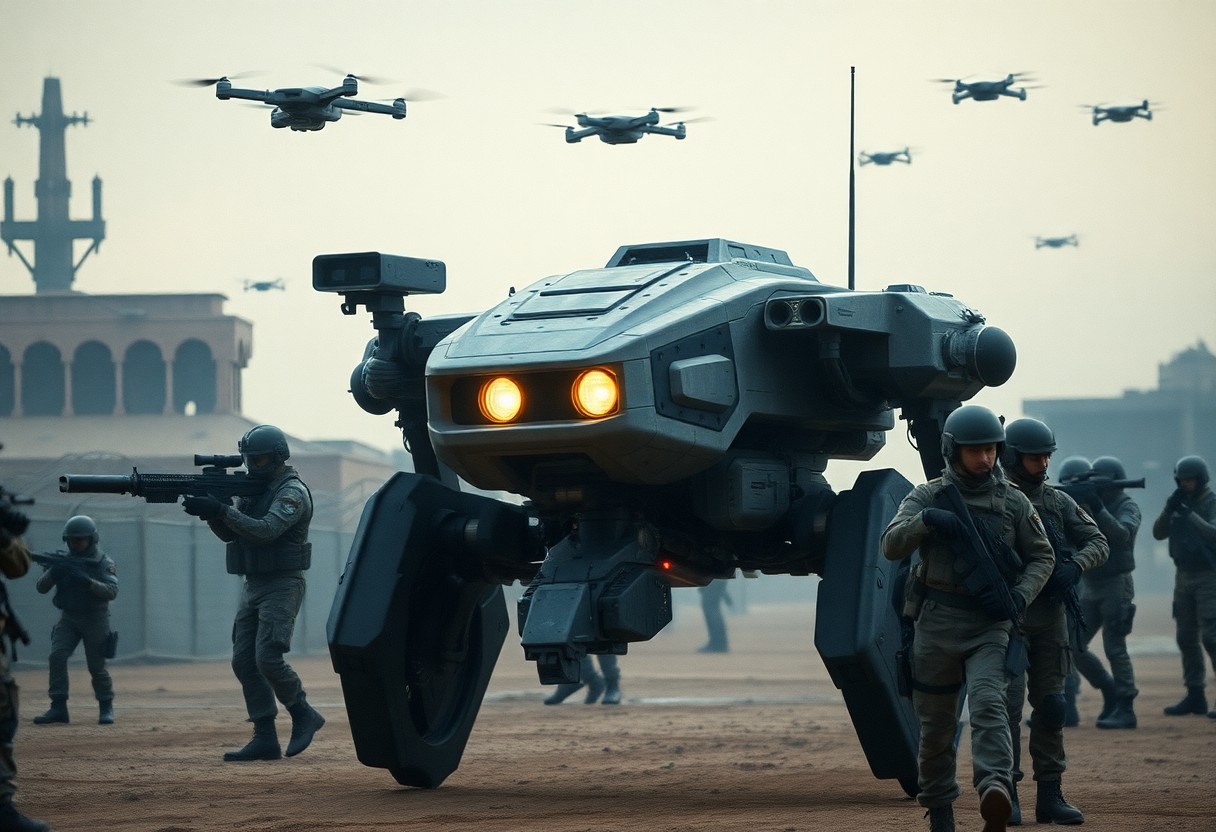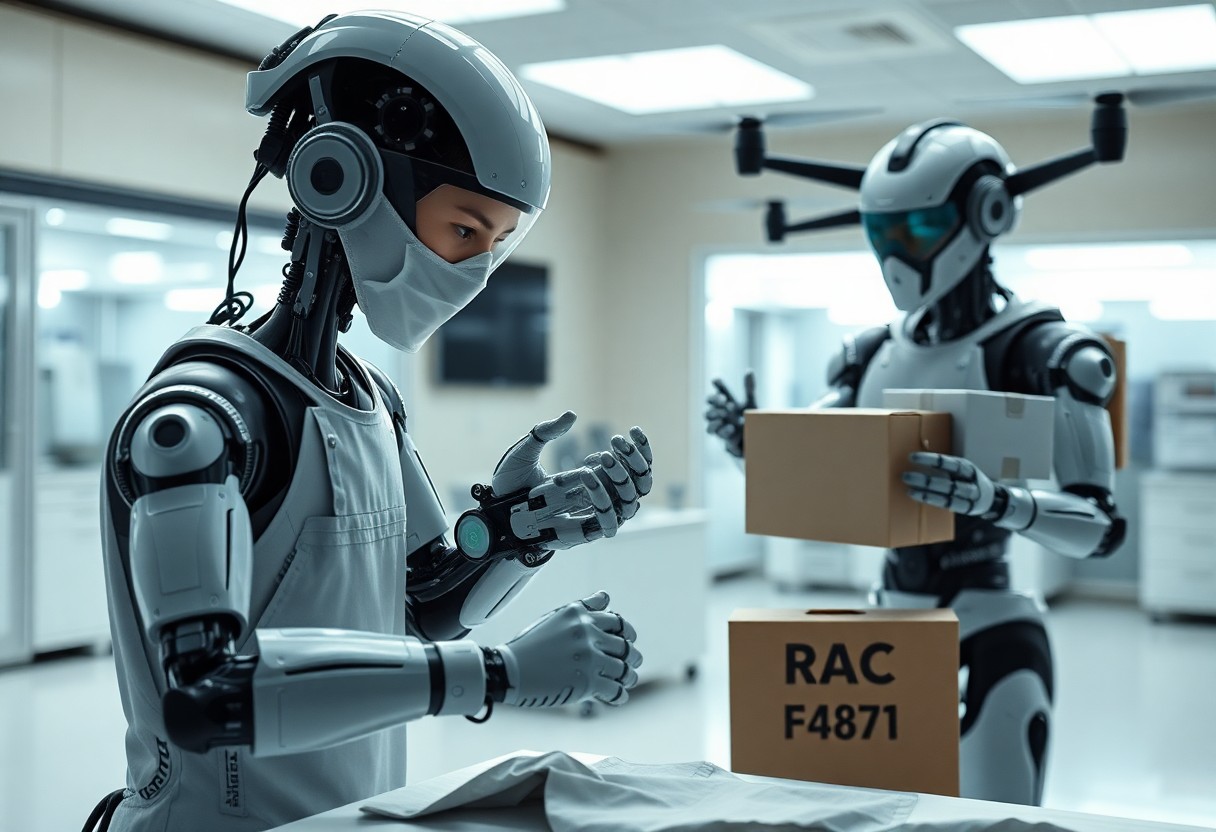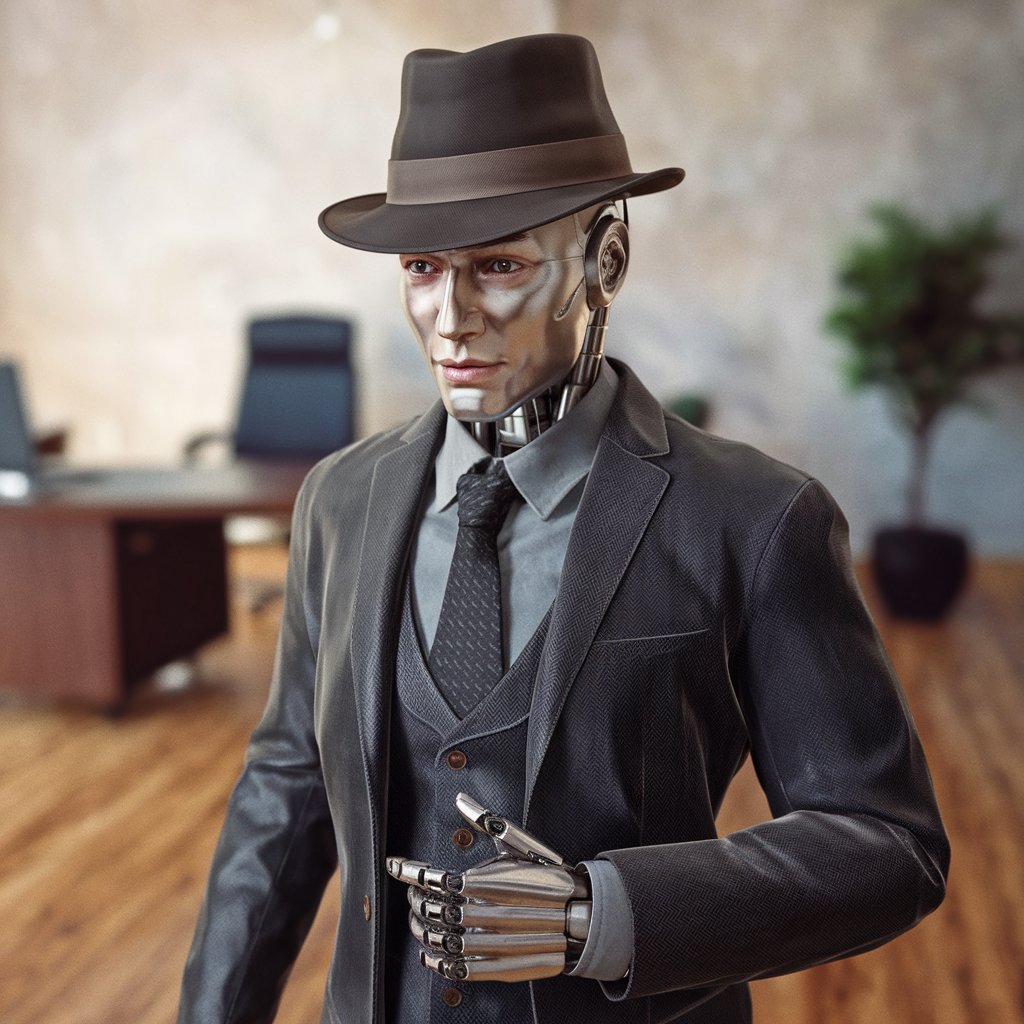Just imagine a battlefield where drones scout enemy territory while robotic units engage in combat, all without putting human lives at risk. In today’s rapidly evolving military landscape, you’ll discover how military robots are revolutionizing modern warfare through advanced technologies and innovative applications. From autonomous drones to robotic ground units, these technological advancements are enhancing operational efficiency and changing the strategies of combat. This post will guide you through the key innovations and impacts of military robots, shedding light on their role in shaping the future of warfare.
The Rise of Military Robots
While traditional combat methods have dominated warfare for centuries, the rise of military robots is ushering in a new era. You are witnessing a transformation where unmanned systems take on various roles, enhancing strategic capabilities and reshaping how conflicts are conducted. This advancement not only impacts military operations but also influences tactics, logistics, and decision-making processes on the battlefield.
Historical Context
Context plays a key role in understanding how military robots emerged. Initially driven by the need for enhanced efficiency and reduced human casualties, the integration of robotics in defense evolved from early automation into sophisticated devices capable of complex tasks. As technology advanced, militaries recognized the potential of robots, marking a significant shift in warfare strategies.
Key Technological Advancements
Robots have benefitted from rapid advancements in various technologies, leading to their increasing use in military applications. Innovations in artificial intelligence, sensor technology, and remote piloting have equipped these machines with enhanced situational awareness and decision-making capabilities. You are seeing how drones, ground robots, and autonomous systems are not just tools, but they are becoming integral to modern military strategy.
Rise in military robots can largely be attributed to breakthroughs in artificial intelligence, enabling unmanned systems to analyze data real-time and execute complex missions autonomously. Advances in sensor technology have also equipped these robots with improved perception, allowing them to navigate challenging environments and perform tasks accurately. You may have encountered stories of drones conducting surveillance or ground robots assisting in logistics, showcasing the potential of technology to redefine military operations efficiently and safely.
Types of Military Robots
You can explore various types of military robots that are crucial in modern warfare, each serving unique functions and capabilities. These include:
- Unmanned Ground Vehicles (UGVs)
- Unmanned Aerial Vehicles (UAVs)
- Autonomous Marine Systems
- Robotic Weapon Systems
- Explosive Ordnance Disposal Robots
Perceiving the capabilities of these advanced machines provides insight into their significant roles on the battlefield.
| Type | Description |
|---|---|
| Unmanned Ground Vehicles (UGVs) | Robots designed to navigate and operate on land. |
| Unmanned Aerial Vehicles (UAVs) | Drones used for surveillance, reconnaissance, and targeting. |
| Autonomous Marine Systems | Robots operating in aquatic environments for reconnaissance and logistics. |
| Robotic Weapon Systems | Aerial and ground robots equipped with combat capabilities. |
| Explosive Ordnance Disposal Robots | Designed to safely neutralize explosive threats. |
Unmanned Ground Vehicles (UGVs)
After their introduction, UGVs have revolutionized land-based operations in military settings. These robots can traverse hazardous terrain, gather intelligence, and support troops while minimizing risks to personnel. Equipped with various sensors and tools, UGVs can perform surveillance tasks, logistics operations, and facilitate communication in the field.
Unmanned Aerial Vehicles (UAVs)
Against the backdrop of evolving warfare strategies, UAVs have emerged as game-changers in military operations. They allow for real-time intelligence gathering, combat support, and targeted strikes, thus reshaping engagement tactics. By providing aerial perspectives, UAVs enhance situational awareness for military personnel on the ground.
Unmanned Aerial Vehicles (UAVs) are often deployed for reconnaissance missions, giving commanders a comprehensive view of the battlefield. Additionally, they have the versatility to perform precision strikes with minimal collateral damage. Equipped with advanced sensors, GPS, and arms systems, UAVs can operate in various combat scenarios, making them invaluable assets to modern military forces.
Autonomous Marine Systems
Behind the scenes of naval warfare, Autonomous Marine Systems are becoming increasingly pivotal in maritime operations. These robots enable extensive data collection, mine clearance, and reconnaissance without risking human lives. Such systems can autonomously navigate challenging oceanic environments, providing critical support for naval fleets.
Types of Autonomous Marine Systems range from underwater drones to surface vessels equipped with sophisticated navigation technology. They are necessary for conducting maritime surveillance, environmental monitoring, and underwater research, significantly enhancing naval capabilities. Furthermore, these systems lead to increased efficiency in mission execution while reducing operational costs and risks associated with manned missions.
Operational Roles of Military Robots
Your understanding of modern warfare will be incomplete without acknowledging the diverse operational roles that military robots play. From gathering intelligence to supporting troops on the battlefield, these technologies are reshaping tactical approaches globally.
Surveillance and Reconnaissance
Against traditional methods, military robots enhance surveillance and reconnaissance capabilities, providing real-time data and reducing risks to personnel. Drones and ground robots equipped with advanced sensors offer unparalleled situational awareness, allowing for efficient monitoring of large areas and enemy movements.
Logistics and Supply Chain Operations
On the front lines, military robots are streamlining logistics and supply chain operations, ensuring that troops receive the necessary resources promptly and securely.
Due to advancements in autonomous vehicles and robotic systems, military logistics now involve unmanned transport solutions that can navigate diverse terrains. These robots significantly reduce the burden on human soldiers, minimizing exposure to danger while maximizing efficiency in delivering supplies, munitions, and equipment directly to where they are needed most on the battlefield.
Combat and Support Missions
On the battlefield, military robots are increasingly relied upon for combat and support missions, providing critical assistance to human soldiers.
Operations involving combat robots offer enhanced firepower and protection, allowing armed forces to engage threats while minimizing risks. These machines can perform tasks such as bomb disposal, direct engagement, and serving as mobile platforms for weapon systems. By integrating robots into combat roles, militaries are not only improving mission outcomes but also preserving soldier lives during high-stakes operations.
Advantages of Using Military Robots
Not only do military robots enhance operational capabilities, but they also offer strategic advantages that can shift the balance of power on the battlefield. Their ability to conduct missions in high-risk environments allows for improved troop safety, operational efficiency, and precise execution of tasks, resulting in fewer human errors and better outcomes.
Enhanced Efficiency and Precision
Below the surface of traditional warfare, military robots bring unprecedented speed and accuracy to operations. By incorporating advanced algorithms and real-time data, these machines execute tasks consistently and minimize the chance of mistakes, significantly increasing overall mission success rates.
Risk Reduction for Human Soldiers
Robots play a vital role in keeping soldiers out of harm’s way. By taking on high-risk missions, such as reconnaissance or bomb disposal, military robots effectively mitigate the dangers faced by human personnel, allowing you to focus your human resources on strategy and decision-making.
Efficiency in risk reduction means that the lives of your soldiers are prioritized. By deploying robots in hostile environments, you can gather intelligence or neutralize threats without putting troops in direct danger. This transformative approach enhances overall mission safety and allows for more strategic planning.
Data Collection and Analysis Capabilities
Reduction of information gaps becomes manageable through the deployment of advanced military robots equipped with sophisticated sensors and analytics. These machines can gather, process, and relay data in real-time, giving you a comprehensive view of the battlefield and improving decision-making capability significantly.
Enhanced data collection capabilities provide you with detailed insights that can inform tactical choices and operational strategies. With access to real-time information, you can make adjustments on the fly and maintain the upper hand, ensuring your forces operate with the most current intelligence available.
Ethical Considerations and Challenges
Once again, the rise of military robots prompts deep ethical questions concerning the nature of warfare. As you explore their deployment, consider the moral implications of machines making life-and-death decisions. The potential loss of human oversight raises concerns about accountability, decision-making processes, and the value placed on human life in conflict situations. These considerations are crucial as you investigate into the impact of technology on modern battlefields.
Accountability in Autonomous Warfare
By integrating artificial intelligence into military operations, you face a significant challenge in determining accountability. If an autonomous system makes a decision that results in unintended consequences, who is responsible? Is it the developers, the military personnel, or the machine itself? This grey area complicates the legal and moral frameworks surrounding warfare, requiring you to consider how accountability can be effectively managed in situations where machines operate independently.
Civilian Safety and Collateral Damage
An important concern surrounding military robots is the protection of civilians and the potential for collateral damage. As you analyze the implications of autonomous systems, consider how advanced targeting and surveillance technologies may reduce unintended harm to non-combatants. However, the risk of errors remains, particularly in unpredictable environments where machine decision-making may falter. This highlights the need for robust ethical standards to safeguard civilian lives during military operations.
Another aspect to examine is how the reliance on military robots affects your perception of risk and responsibility in warfare. While these systems are designed to minimize collateral damage, the reality is that their deployment could still lead to tragic accidents. As you reflect on this issue, think about the implications of using algorithms and data to make life-or-death decisions. Effective regulations and guidelines must be established to ensure that advancements in military technology do not come at the expense of civilian safety and ethical responsibility.
Future Trends in Military Robotics
Unlike traditional warfare, the future of military robotics promises unprecedented advancements, with automation and autonomy at the forefront. As militaries continue to invest in robotic technologies, you may witness a shift toward more sophisticated battle strategies, utilizing unmanned systems for reconnaissance, logistics, and direct combat. These innovations will reshape not only battlefield tactics but also the ethical considerations surrounding warfare.
Integration with AI and Machine Learning
Future developments in military robotics will likely focus on integrating artificial intelligence and machine learning, enhancing the decision-making capabilities of unmanned systems. You can anticipate that robots will be equipped with advanced algorithms, allowing them to analyze vast amounts of data and adapt in real-time to evolving battlefield scenarios. This integration may lead to more effective and efficient operations, reducing risks for human soldiers.
International Policies and Treaties
On the global stage, discussions around international policies and treaties regarding military robotics are becoming increasingly important. You should recognize that as nations develop and deploy these technologies, the potential for conflict and the need for regulation will grow, prompting dialogue on ethical deployment and accountability.
It is imperative to understand that international policies and treaties will play a significant role in shaping the future landscape of military robotics. These frameworks will guide how nations utilize robotic technologies, addressing concerns related to autonomous weapons, civilian safety, and compliance with humanitarian laws. As you follow these developments, you will see how global cooperation can lead to responsible use of military robotics and help prevent escalation into armed conflicts driven by misunderstanding and fear of advanced technologies.
To wrap up
With this in mind, you can see how military robots are fundamentally changing the landscape of modern warfare through key innovations such as autonomous drones, advanced surveillance systems, and robotic ground units. These technologies are enhancing your military capabilities, increasing precision in operations, and reducing risks to human soldiers. As you explore this transformative era, consider how these innovations not only affect tactical strategies but also the ethical implications for future conflicts and defense policies. The integration of robotics into military operations is an ongoing evolution that redefines how nations approach security and warfare.






